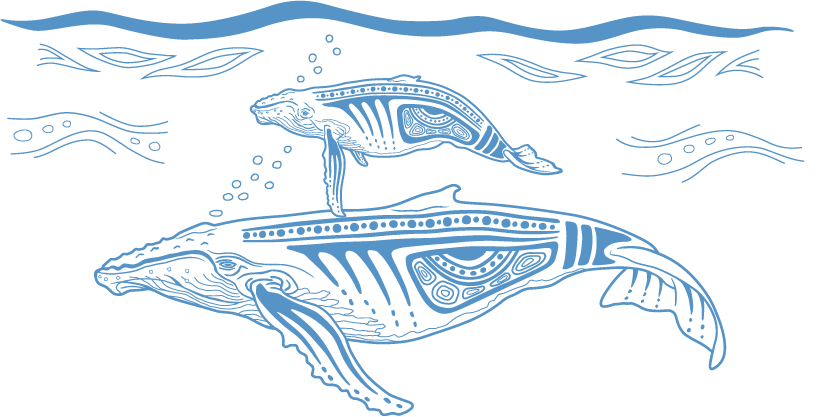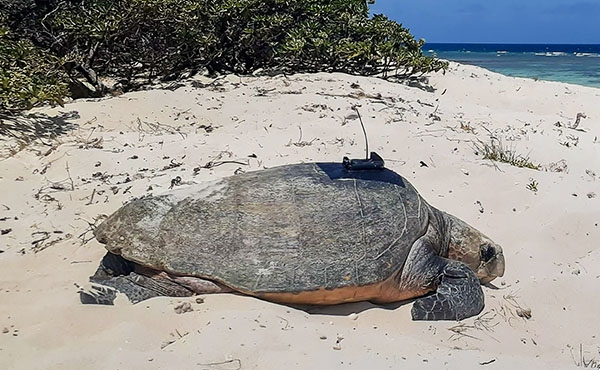The Region is home to the world’s largest coral reef ecosystem and has enduring natural, social and heritage values. Widespread disturbances, such as repeated mass bleaching events, cyclones, reduced water quality and outbreaks of crown-of-thorn starfish can have negative impacts on the overall resilience of the Reef. Yet, impacts have been highly variable, and some ecosystems have demonstrated capacity to recover. The natural resilience of the Region’s values is being undermined by increases in the severity and frequency of disturbances.5
The Reef’s natural resilience is being undermined by increasing disturbances
Resilience-based management should be underpinned by an understanding of the Reef’s natural process of vulnerability and recovery potential, which are key elements in identifying how management interventions can be targeted to protect and support resilience. There is also a recognised lag between implementing actions to improve resilience and observable ecosystem improvements.5 Outcomes of conventional management approaches indicate the Reef’s systems are able to recover naturally when stressors are removed. For example, controlling crown-of-thorns starfish can suppress coral loss, and compliance with fishing regulations has had a demonstrated positive impact on fisheries across the Region. As the effects of climate change exacerbate pressures and reduce recovery windows, this capacity to recover is increasingly challenged. Maintaining the systemic resilience of the Reef will continue to depend on reducing or removing pressures. Although there is high uncertainty about the risks posed by ongoing climate change, there is also an opportunity to enhance the processes that drive recovery.
Resilience-based management should support natural recovery
The Region’s resilience is assessed through nine case studies: seven ecosystem studies and two heritage studies. Among the ecosystem case studies, humpback whales stand out as having made a strong recovery and this recovery is due to an international agreement put in place several decades ago to protect them against hunting in the Southern Ocean. Seagrass meadows in the northern Region have been recovering from recent cumulative disturbances, while the southern meadows remain vulnerable especially after the 2020 floods in Burnett Mary catchments. Black teatfish populations have recovered from their lowest point in the 1920s and the fishery re-opened in 2019, but the degree of improvement over the past 2 decades is less clear. The latest coral trout assessment indicates that stocks are recovering, but they remain sensitive to coral habitat loss and the risk of overfishing. In contrast, urban coast dugongs and loggerhead turtles have shown declines in population and recruitment and continue to be affected by global and local disturbances. Loss of seagrass habitat remains one of the main causes of dugong mortality, particularly in the southern Region. While loggerhead turtle populations showed recovery over past decades due to local interventions, numbers of nesting females have been declining more recently. Impacts, such as fishing bycatch, marine debris, and temperature increase continue to threaten the resilience of turtle populations.
Coral reef habitats, seagrass meadows and coral trout show signs of resilience
Responses of coral reef habitats to global and local stressors have been highly variable. Offshore reefs have shown signs of recovery of coral reef condition following repeated mass bleaching events, but this has been primarily associated with increases in cover of fast-growing Acropora corals, which are also extremely sensitive to future acute disturbances. The magnitude of changes in coral cover across the last decade, compared to the previous decade, may indicate that the coral reefs may be moving into an era of increasing instability in coral cover succession. Coral cover does not reveal information such as diversity, community composition, or demography and recruitment of key reef species. These elements are vital for ecosystem resilience. Therefore, coral reef habitats remain vulnerable to further disturbances as changes to Acropora-dominated communities can result in the erosion of resilience. Additionally, as recovery windows diminish so does the capacity to bounce back from disturbances each time.
Resilience of social and Indigenous heritage values is underpinned by a healthy ecosystem and the connections people have with each other and the Reef
Social heritage values are being maintained, and are demonstrated by strong evidence from the Reef’s tourism industry. The tourism industry was significantly affected by repeated mass coral bleaching events and more recently by the COVID-19 pandemic. This industry has shown great resilience to adapt to changes and has created new partnerships that enhanced stewardship of the Reef. However, the resilience of social values is only as strong as the resilience of the ecosystems that underpin it. Therefore, in this complex social–ecological Reef system, a resilience-based management approach will continue to be vital for maintaining the outstanding universal value of the Region.
The Reef’s Traditional Owners are the Custodians of Indigenous heritage values, and resilience of these values depends on their continuing connection to Culture and Sea Country. The protection of culturally important sites is built on strong traditions of intergenerational knowledge sharing within and between communities, according to traditional lore, customs, and cultural authority governance systems. Indigenous knowledge of Country and management practices provide a valuable approach for caring for the environment for all Australians. Strong governance and co-management principles that connect Traditional Owners and Custodians to their Country and support the agency of First Nations peoples in land and sea country management will benefit the resilience of ecosystem and heritage values of the Reef.


